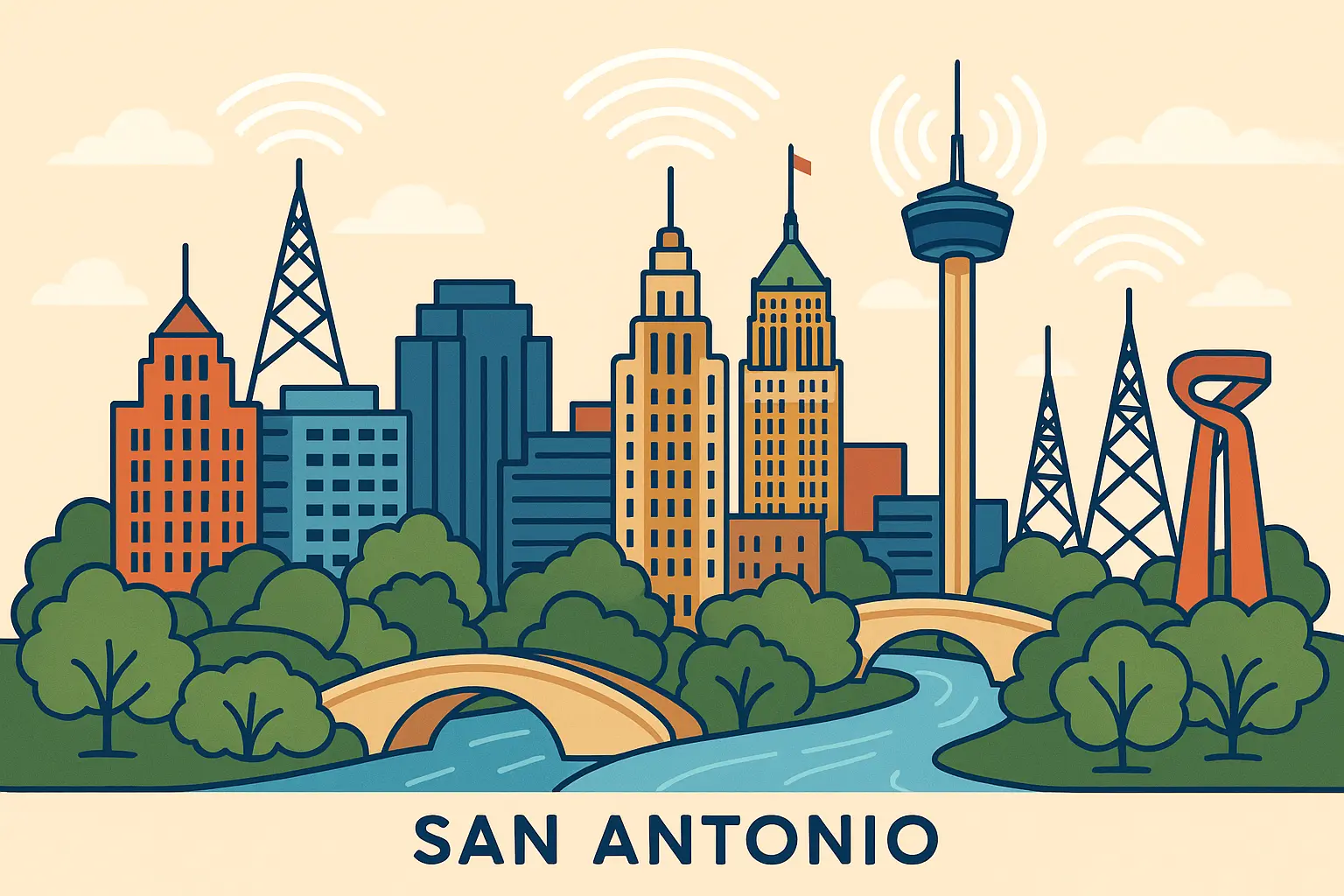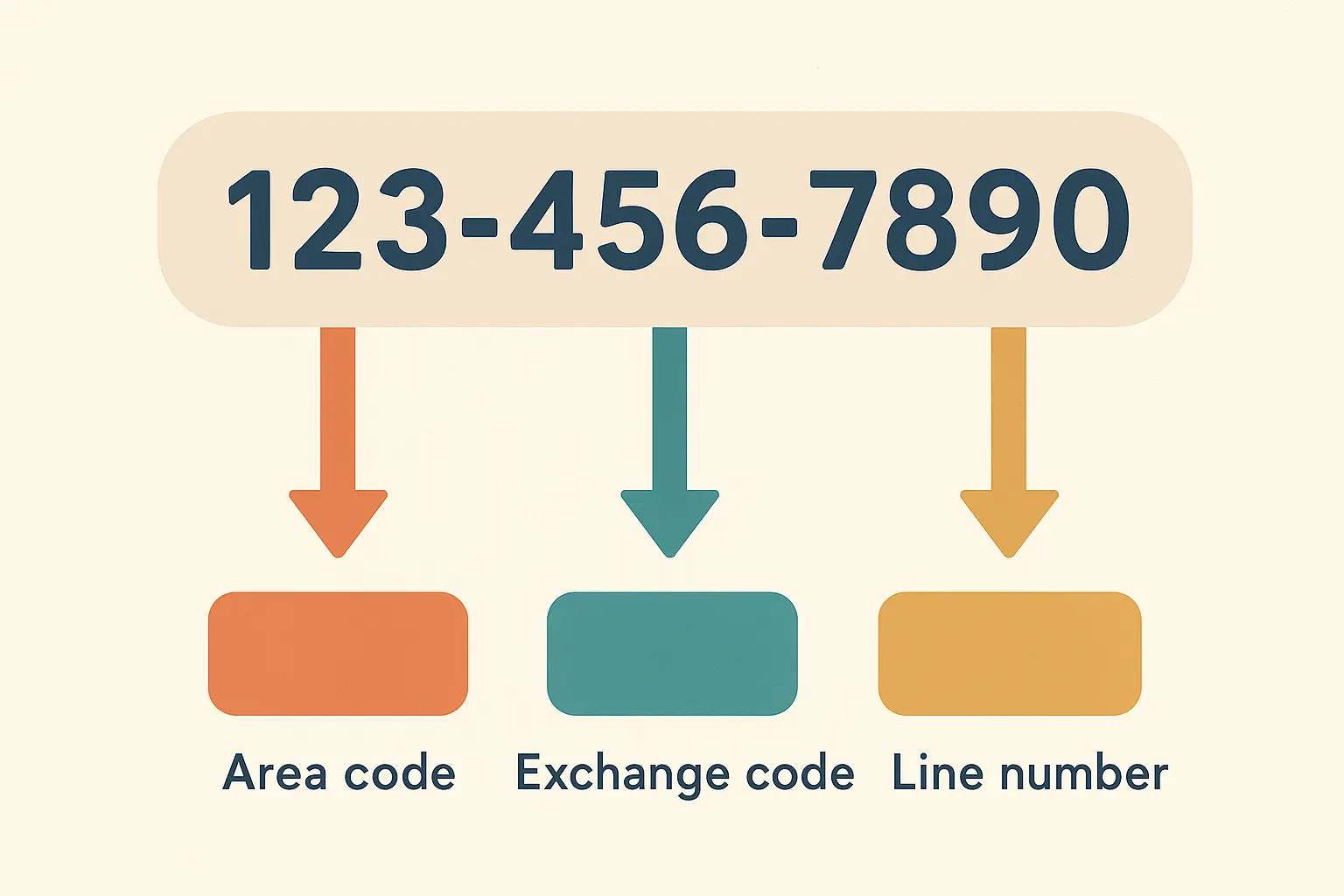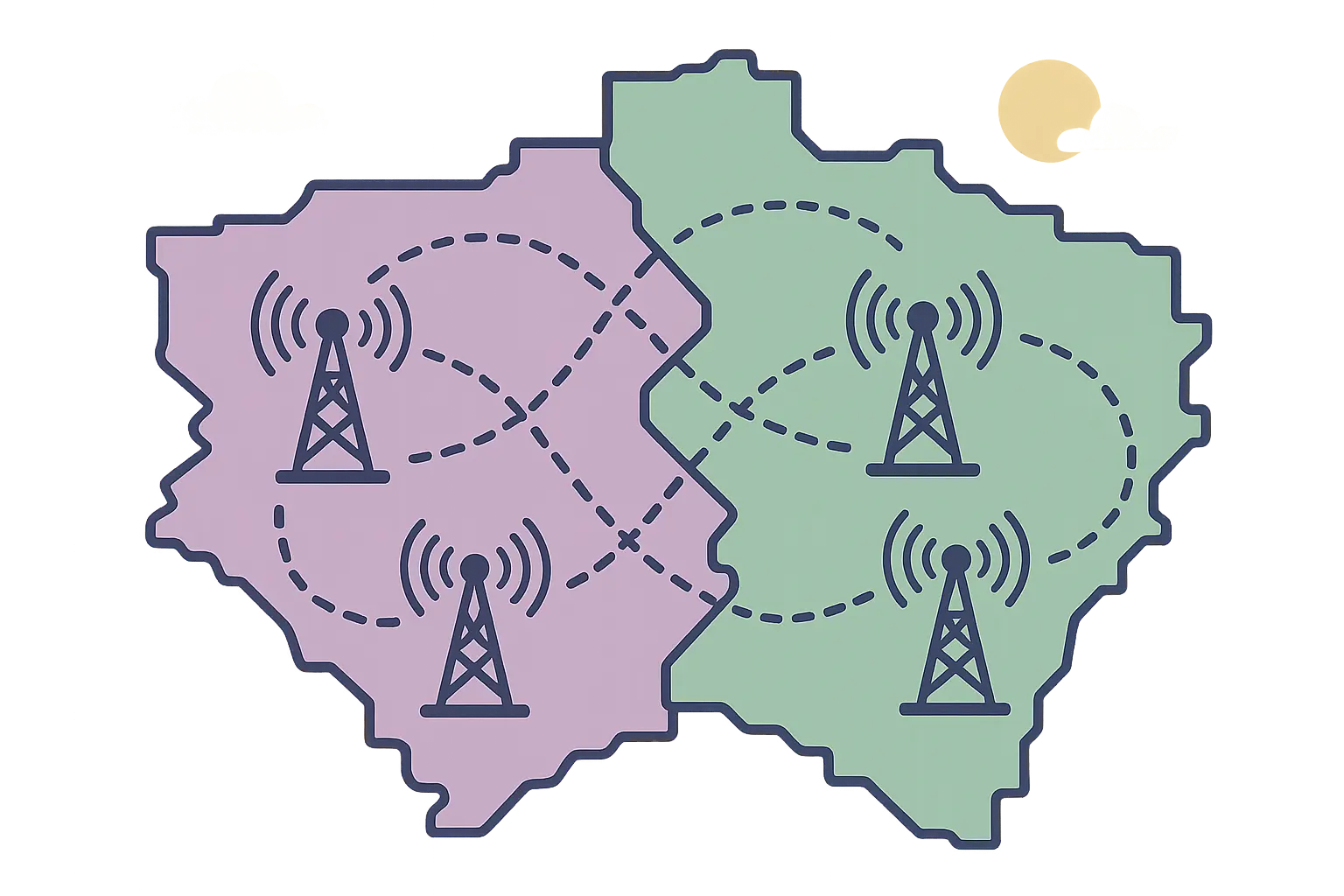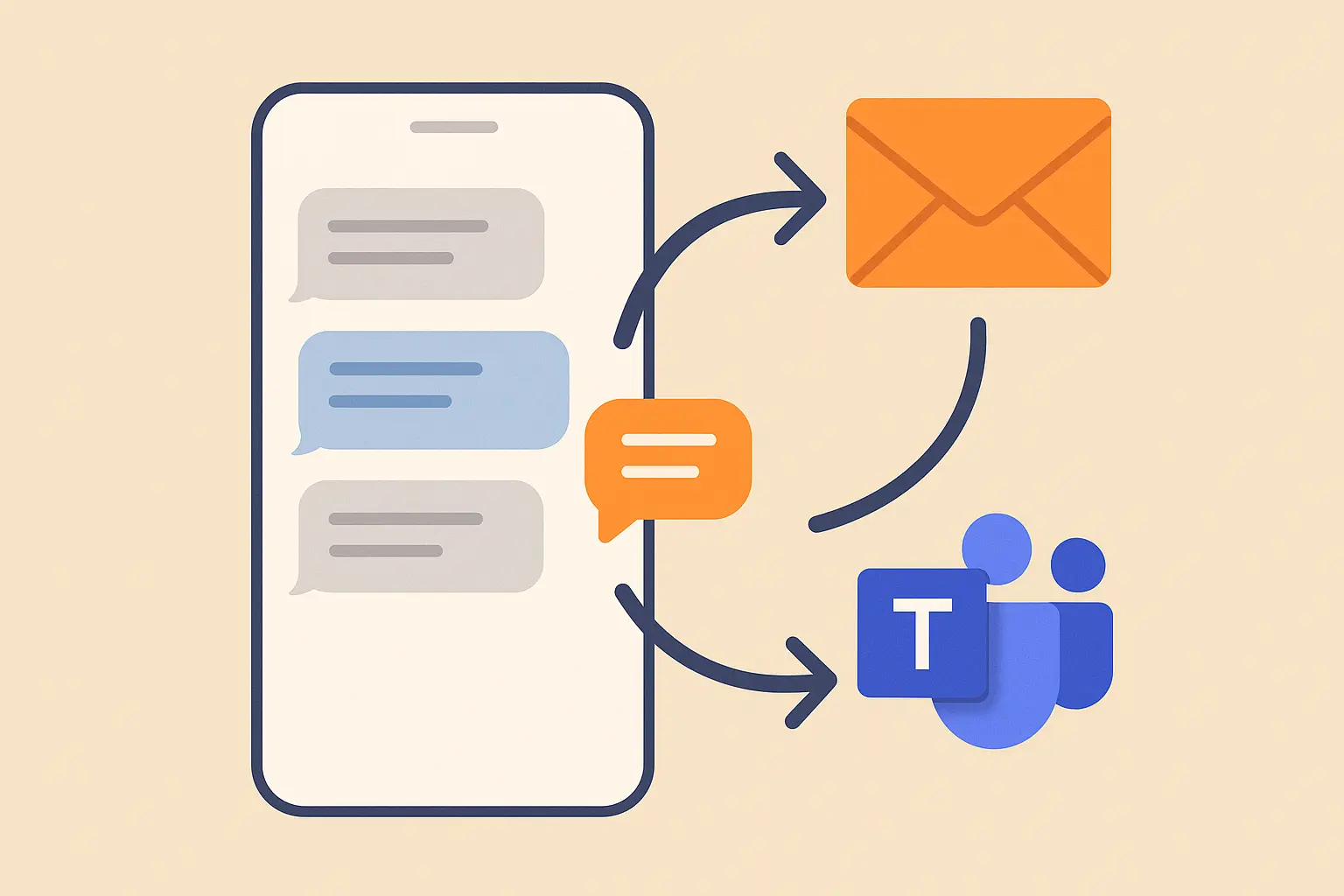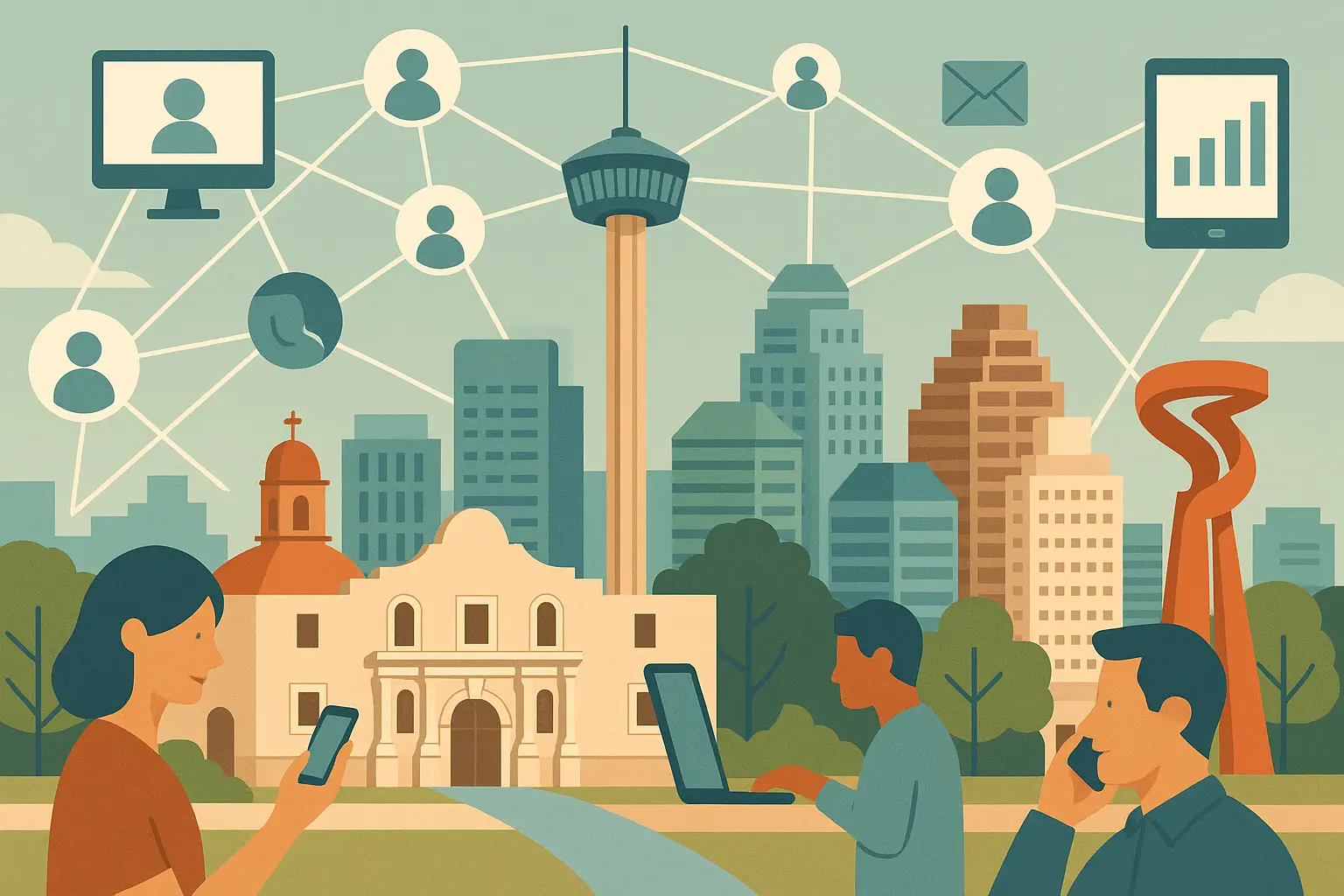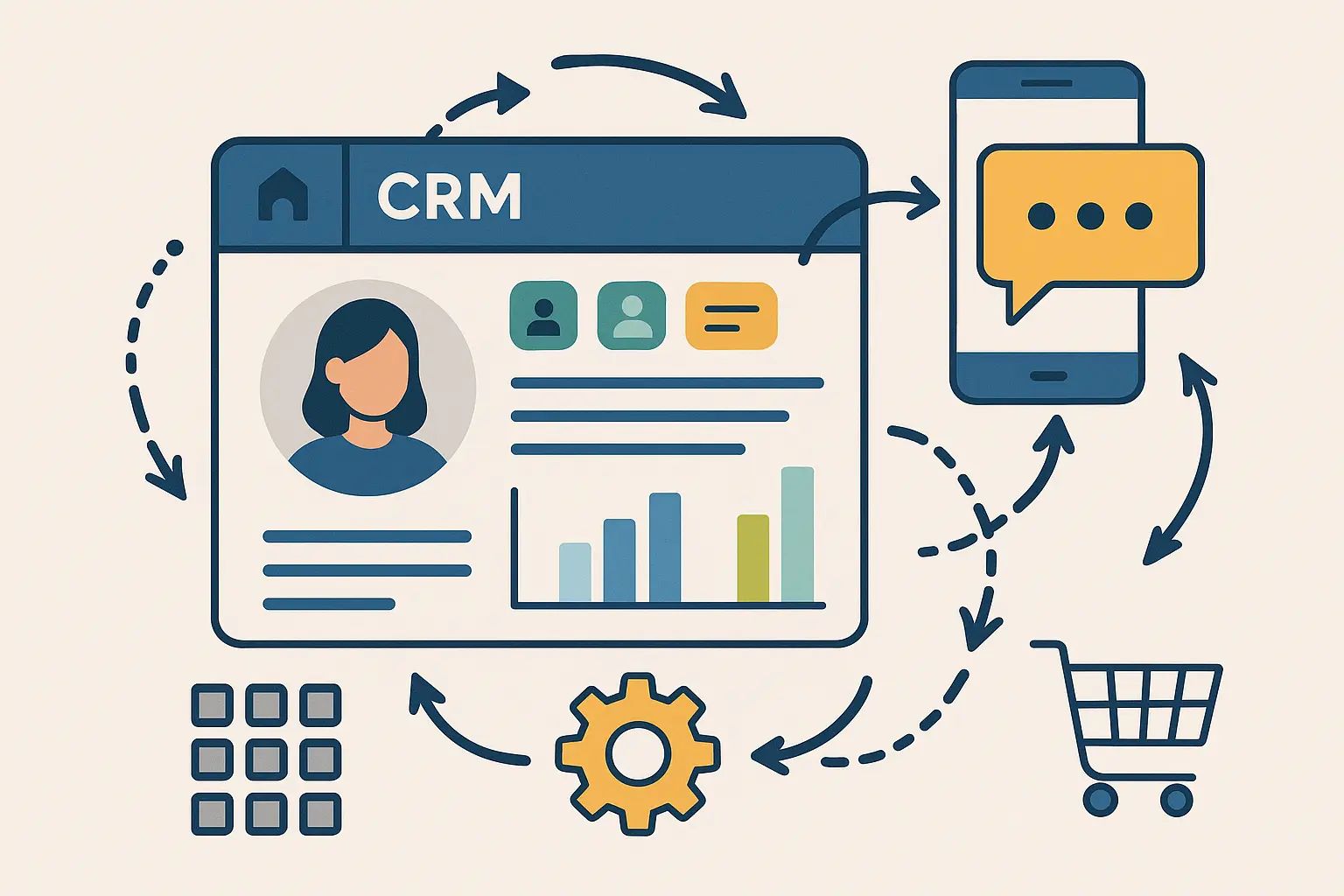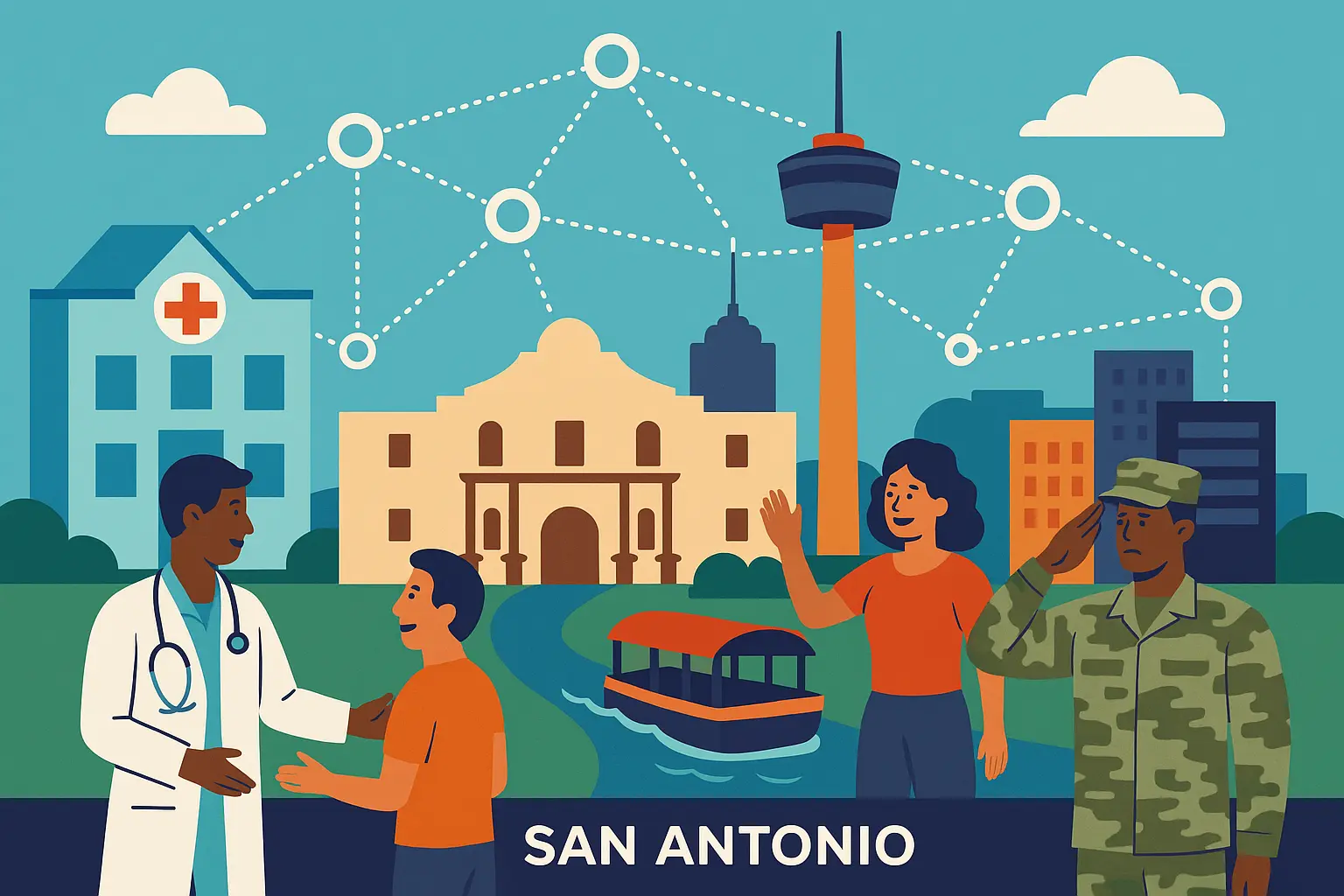If you live or work in San Antonio, you’ve probably noticed some changes in how phone calls work around here. The 210 area code has been the city’s signature for decades, but recent updates have created new rules that catch people off guard.
Whether you’re running a business downtown or just moved to one of the suburban neighborhoods, understanding how the current system works will save you headaches. Here’s what’s actually happening with San Antonio’s phone numbers.
Table of Contents
Table of Contents
-
What Makes the 210 Area Code Special in Texas
-
Time Zone Reality Check
-
How 210 Came to Be (And Why It Matters Now)
-
Why Your Business Texts Go Missing
-
Living With the 726 Overlay
-
Real Solutions San Antonio Residents Use
TL;DR – The Essential 210 Area Code Facts
-
The 210 area code covers San Antonio’s metro area and operates on Central Time Zone
-
You’ll need to dial 10 digits for all calls due to the 726 overlay implementation
-
This area code started in 1992 when Texas split the original 512 region
-
Business SMS forwarding becomes crucial when managing high message volumes
-
The overlay system means new numbers can get either 210 or 726 codes
-
Central Time Zone operations affect scheduling and automated business systems
What Makes the 210 Area Code Special in Texas
San Antonio’s Communication Hub Status
The 210 area code connects over 2.5 million people across one of Texas’s biggest metro areas. From the River Walk tourist district to quiet neighborhoods like Alamo Heights, everyone shares this same communication network.
This creates interesting challenges. Tourist businesses handle different communication patterns than residential services. Medical practices need reliable message systems. Small businesses juggle personal and work calls on the same line.
The demographic diversity within the 210 area code includes 41% Hispanic, 32% White, 7% African American, and 4% Asian populations, creating a multicultural communication environment that businesses must navigate effectively.
Downtown Core and Historic Districts
Every business from the Alamo gift shops to trendy River Walk restaurants operates under 210. The central business district relies heavily on this area code for everything from tourist information hotlines to corporate headquarters managing statewide operations. Businesses in this area handle significantly higher SMS volumes during peak tourist seasons, creating unique challenges for message management.
Suburban Communities That Matter
Beyond downtown, the 210 area code extends into established neighborhoods like Terrell Hills and various residential developments. These suburban areas depend on the same area code system, but serve different customer bases with different communication needs than downtown tourism businesses.
Geographic Boundaries That Actually Affect You
Understanding where 210 coverage ends matters for your wallet. Not all of greater San Antonio uses 210, and assuming a call is “local” can lead to unexpected charges.
|
Geographic Area |
Coverage Status |
Business Impact |
|---|---|---|
|
Downtown San Antonio |
Full 210/726 Coverage |
High density, tourist-focused |
|
Alamo Heights |
Full Coverage |
Residential, professional services |
|
Terrell Hills |
Full Coverage |
Upscale residential, small business |
|
Outer Bexar County |
Partial Coverage |
Mixed rural/suburban needs |
|
Comal County (parts) |
Limited Coverage |
Growing suburban areas |
Northern Limits and Transition Zones
The northern edge of 210 coverage creates situations where you might think you’re calling locally, but you’re actually crossing into different area code territory. This becomes particularly relevant for businesses serving customers across the broader San Antonio metro area.
Southern and Western Coverage Areas
Extending southward and westward from central San Antonio, the 210 area code covers established suburban areas and some rural territories within the original service boundaries. These areas often have different communication needs than the urban core.
Time Zone Reality Check
Living in the 210 area code means you’re on Central Time, which affects more than just meeting schedules. If you run a business, this impacts when your automated messages send, when customers expect responses, and how you coordinate with clients in other time zones.
With a median household income of around $53,000 in the 210 area code region, businesses need to optimize their communication timing to reach customers when they’re most available, typically during evening hours and weekends when working families can engage.
Business Hour Coordination Challenges
When you’re managing communications from a 210 number, timing becomes crucial. Customer expectations around response times, automated message delivery, and when your forwarded emails arrive can make or break business relationships.
A local restaurant using SMS forwarding for reservation confirmations discovered that messages sent at 3 PM Central Time were being received by East Coast customers during their dinner preparation time, leading to higher engagement rates and fewer no-shows. This timing insight transformed their booking confirmation strategy and significantly improved customer retention rates.
Daylight Saving Time Complications
The shift to Central Daylight Time creates temporary confusion for automated systems and scheduled communications. Businesses struggle with SMS forwarding schedules that suddenly arrive an hour earlier or later than expected. The twice-yearly time changes require proactive adjustments to automated systems and customer communication schedules.
Technical Standards That Affect Your Calls
The 210 area code follows North American Numbering Plan standards, but there are specific technical requirements that impact how your calls get routed and processed. Understanding these details helps explain why some calls connect smoothly while others seem to have issues.
When setting up business communications systems, it’s essential to understand US phone number format with country code requirements for proper call routing and SMS delivery.
Number Format Requirements
Every 210 number follows the standard (210) XXX-XXXX format, but the technical implementation affects everything from how quickly calls connect to whether your SMS messages get delivered reliably to forwarding systems. The underlying infrastructure processes these numbers through specific routing protocols that can impact delivery speed and reliability.
How 210 Came to Be (And Why It Matters Now)
The Great Texas Area Code Split of 1992
Back in 1992, Texas faced a telecommunications crisis. The original 512 area code couldn’t handle the explosive growth in phone number demand, forcing a split that created the 210 area code specifically for San Antonio. This wasn’t just administrative paperwork – it reshaped how an entire metropolitan area communicated.
The transition from sharing 512 with Austin to having San Antonio’s own 210 area code was a defining moment for the city’s identity. As Terry Hadley, with the Public Utility Commission of Texas explains, “With continued growth in homes, businesses and the explosion of mobile phones eventually new area codes are needed and it’s getting time for one in San Antonio.”
This split gave San Antonio its own telecommunications identity separate from Austin. Businesses could finally have phone numbers that immediately identified them as San Antonio-based, which became a point of local pride and marketing advantage.
Transition Challenges People Actually Faced
The implementation process involved careful coordination to minimize disruption, but real people and businesses still had to adapt their communication systems, update marketing materials, and retrain customers on new dialing procedures. Business owners remember the months of confusion as customers struggled to reach them using old dialing patterns.
Why 1992 Was the Perfect Storm
The timing of the 210 area code creation coincided with San Antonio’s economic growth and the early adoption of business communication technologies that required more phone numbers than anyone had anticipated. The city was experiencing rapid expansion in both population and business development, creating unprecedented demand for telephone services.
Modern Updates That Changed Everything
The addition of the 726 overlay area code fundamentally altered how 210 area code users handle their daily communications. This wasn’t just about getting more phone numbers – it created new requirements for dialing patterns and business communication strategies.
According to San Antonio Report, “The era of knowing someone is from San Antonio based solely on the ‘210’ at the start of a phone number is drawing to a close. San Antonio is outgrowing its singular 210 area code and will have to add a second code, 726.”
This change marked the end of an era where 210 served as an instant identifier of San Antonio origin. Now, both 210 and 726 numbers coexist in the same geographic region, requiring new approaches to local business marketing and customer identification.
The 726 Overlay Implementation Reality
When 726 was added as an overlay, existing 210 users didn’t have to change their numbers, but they did have to change how they dialed every single call. This shift affected everything from muscle memory to automated dialing systems. Businesses had to reprogram their phone systems, update contact databases, and retrain staff on new procedures.
How New Numbers Get Assigned Now
The current system assigns either 210 or 726 area codes to new numbers based on availability and carrier procedures, which means businesses can’t always predict which area code they’ll receive when setting up new lines. This unpredictability affects branding strategies and customer recognition patterns that businesses have relied on for decades.
Why Your Business Texts Go Missing
SMS Management Challenges in the 210 Region
Running a business with a 210 area code number creates unique SMS management challenges that trip up even experienced entrepreneurs. High message volumes, mixed personal and business communications, and the need to coordinate across different time zones all contribute to messages falling through the cracks.
The population diversity in the 210 region, with a median age of 34 and 22% of the population under 18, creates varied communication preferences that businesses must accommodate through flexible SMS management systems. Younger customers expect immediate responses via text, while older demographics may prefer phone calls or email follow-ups.
Many businesses find success by learning how to forward text messages on an Android phone to ensure team members receive critical customer communications regardless of device type.
Customer Service Communication Gaps
Many San Antonio businesses operate customer service centers that handle significant SMS volumes for appointment confirmations, delivery notifications, and customer updates. Without proper forwarding systems, these messages can get buried in personal phone notifications or missed entirely when key team members aren’t available.
A medical practice in the Medical Center discovered that patient appointment reminders sent via SMS were being missed by front desk staff during lunch breaks, resulting in higher no-show rates until they implemented automated forwarding to multiple team members. This simple change reduced their no-show rate by 35% and improved patient satisfaction scores significantly.
Multi-Location Business Coordination
Companies with multiple locations or remote teams face particular challenges when important SMS communications to their 210 numbers need to reach the right people regardless of their physical location or current availability. The geographic spread of the 210 area code means team members might be scattered across different parts of the metropolitan area.
Personal Communication Management Needs
Individual users of 210 area code numbers often juggle personal and business communications on the same device, creating organizational challenges that affect both personal relationships and professional opportunities. The boundary between work and personal life becomes blurred when the same phone handles both types of communications.
Family and Emergency Communication Backup
Families need reliable ways to share important messages across multiple family members, and having backup systems becomes crucial when the primary phone is unavailable or in poor reception areas common in some parts of the San Antonio region. Emergency situations require communication redundancy that standard phone services don’t provide.
Freelancer and Side Business Management
Many people operate small businesses or freelance operations using their personal 210 numbers, requiring professional message management capabilities without the complexity of enterprise-level solutions. These users need systems that can separate business communications from personal messages while maintaining professional response times.
Living With the 726 Overlay
Mastering the New Dialing Requirements
The 726 overlay fundamentally changed how everyone in the 210 region makes phone calls, but most people still don’t fully understand the implications. Ten-digit dialing for all calls – even local ones – becomes second nature once you understand the system, but there are still nuances that catch people off guard.
|
Dialing Scenario |
Old Method |
New Required Method |
Notes |
|---|---|---|---|
|
Local Business |
123-4567 |
(210) 123-4567 |
Must include area code |
|
Emergency Services |
911 |
911 |
No change required |
|
Toll-Free Numbers |
1-800-XXX-XXXX |
1-800-XXX-XXXX |
No change required |
|
Long Distance |
1-512-XXX-XXXX |
1-512-XXX-XXXX |
No change required |
|
New 726 Numbers |
N/A |
(726) 123-4567 |
Same format as 210 |
Local Call Procedures That Actually Work
Even when calling your neighbor or a business down the street, you must dial the full 10-digit number including the area code. This requirement affects everything from quick reference lists to automate
Even when calling your neighbor or a business down the street, you must dial the full 10-digit number including the area code. This requirement affects everything from quick reference lists to automated dialing systems that businesses rely on for daily operations. The muscle memory of seven-digit dialing took months for most people to overcome.
Emergency Services and Special Numbers
Emergency calls still work with the traditional 3-digit format (911), but other special services may have different requirements that aren’t immediately obvious to users transitioning from the old dialing system. Directory assistance, operator services, and some automated systems maintain their original dialing patterns.
Business Strategy Adaptations
Companies operating in the area code 210/726 overlay region need strategic approaches to communication management that account for the increased complexity of the dual area code system while maintaining efficient customer service and internal coordination.
For teams managing high message volumes, implementing how to forward text messages to a Slack channel creates seamless workflow integration for both 210 and 726 communications.
Team Communication Workflows
Establishing systematic approaches to handle SMS communications becomes essential when your business number might be 210 or 726, and your team members need reliable ways to receive and respond to customer messages regardless of which area code is involved.
A local HVAC company implemented SMS forwarding rules that automatically route emergency service requests (containing keywords like “no heat” or “emergency”) to the on-call technician’s email and Slack channel, ensuring 24/7 response capability regardless of which area code customers use.
Customer Database and CRM Integration
Modern businesses need their SMS communications integrated with customer relationship management systems and project management platforms to maintain comprehensive records and ensure nothing falls through the cracks during busy periods.
10-Digit Dialing Checklist:
-
Update all business cards and marketing materials with 10-digit format
-
Reprogram speed dial and contact lists
-
Update automated dialing systems and customer databases
-
Train staff on new dialing procedures
-
Test SMS forwarding systems with both area codes
-
Verify emergency contact procedures still work
-
Update website and online listings with complete phone numbers
Real Solutions San Antonio Residents Use
Smart San Antonio residents and business owners have figured out that basic phone management doesn’t work anymore in the 210/726 overlay environment. The most effective approach? Automatic message forwarding that routes texts to email or team collaboration platforms.
Why this helps:
-
Never miss important messages when your phone’s dead or out of range
-
Keep business communications organized and searchable
-
Share relevant messages with team members instantly
-
Create backup records for important conversations
Particularly valuable for:
-
Restaurants managing reservations and special requests
-
Service businesses coordinating between locations
-
Healthcare practices with appointment reminders
-
Anyone juggling business and personal communications
The multi-language support proves essential given San Antonio’s significant Spanish-speaking population, ensuring messages in both English and Spanish forward accurately without character corruption. For businesses coordinating across time zones from their Central Time Zone base, reliable delivery systems compensate for network issues that might occur when managing communications across different regions.
Advanced Communication Strategies for 210 Users
Integration Solutions That Actually Work
Beyond basic SMS forwarding, successful 210 area code users have discovered that integrating their communications with existing business systems creates exponential improvements in efficiency. Connecting SMS flows to CRM systems, project management tools, and team collaboration platforms eliminates the constant switching between apps that kills productivity.
CRM System Connection Benefits
When your 210 number’s SMS messages automatically populate customer records in your CRM, you maintain comprehensive communication histories without manual data entry. This becomes particularly valuable for San Antonio businesses serving repeat customers who expect personalized service based on previous interactions.
Project Management Platform Integration
Teams working on client projects can forward relevant SMS communications directly to their project management tools, ensuring that client requests, updates, and feedback become part of the official project record rather than getting lost in individual phone conversations.
Archive and Compliance Considerations
Many businesses operating with 210 area code numbers face legal or regulatory requirements to maintain records of customer communications. Healthcare practices, financial services, and professional service providers need systematic approaches to SMS archiving that go beyond hoping important messages stay in someone’s phone.
Legal Record-Keeping Requirements
Professional service providers often need to demonstrate communication timelines and content for client billing, dispute resolution, or regulatory compliance purposes. Having SMS messages automatically forwarded to email creates searchable, date-stamped records that satisfy most documentation requirements.
Quality Assurance and Training Applications
Customer service operations can use forwarded SMS records to identify training opportunities, track response times, and ensure consistent service quality across team members handling customer communications.
Regional Considerations That Impact Your Daily Operations
San Antonio’s Unique Business Environment
The 210 area code serves a metropolitan area with distinct characteristics that affect communication patterns and business needs. Tourism, healthcare, military presence, and a significant bilingual population create communication challenges that generic solutions often miss.
Tourism and Hospitality Communication Patterns
Hotels, restaurants, and tourist attractions in the 210 region handle high volumes of SMS communications from visitors who may not understand local dialing requirements or time zone differences. Having reliable forwarding systems ensures that booking confirmations, special requests, and service issues reach the right staff members promptly.
Healthcare and Professional Services Coordination
Medical practices, legal offices, and other professional services in San Antonio often coordinate between multiple locations and need secure, reliable ways to ensure patient or client messages reach appropriate personnel regardless of their current location or availability.
Bilingual Communication Management
San Antonio’s significant Spanish-speaking population creates unique requirements for SMS management systems. Messages arrive in multiple languages, and forwarding systems need to handle character encoding properly to prevent corruption of accented characters and special symbols.
For businesses serving multilingual customers, understanding how to enter a phone number in international format becomes essential when coordinating communications across different regions and languages.
Character Encoding and Message Integrity
When SMS messages containing Spanish text get forwarded to email systems or team collaboration platforms, maintaining proper character encoding ensures that accented letters and special characters display correctly, preventing miscommunication and maintaining professional appearance.
Multi-Language Customer Service Workflows
Businesses serving bilingual customers often need forwarding rules that can route Spanish-language messages to bilingual team members while ensuring English messages reach the appropriate staff, creating more efficient customer service workflows.
Bilingual SMS Management Checklist:
-
Test forwarding system with Spanish characters and accents
-
Set up keyword filters for both English and Spanish terms
-
Train bilingual staff on forwarding system usage
-
Create separate forwarding rules for different languages
-
Verify character encoding in email and platform integrations
-
Establish backup procedures for translation needs
Technical Troubleshooting and Optimization
Common Connectivity Issues and Solutions
The area 210 region experiences specific network connectivity challenges that can affect SMS delivery and forwarding reliability. Understanding these issues helps users implement backup systems and optimization strategies that ensure important communications get through even during network disruptions.
Network Coverage Variations Across the Region
Different parts of the San Antonio metropolitan area have varying cellular network coverage quality, which can affect SMS delivery timing and reliability. Having forwarding systems that retry failed deliveries ensures messages eventually reach their destinations despite temporary connectivity issues.
Peak Usage Time Considerations
During high-traffic periods such as major events at the Alamodome or peak tourist seasons, network congestion can delay SMS delivery. Reliable forwarding systems compensate for these delays by maintaining delivery queues and providing confirmation when messages successfully reach their destinations.
Optimization Strategies for High-Volume Users
Businesses and individuals who handle significant SMS volumes through their 210 area code numbers need optimization strategies that go beyond basic forwarding to ensure system reliability and performance during peak usage periods.
Message Filtering and Prioritization
High-volume users benefit from sophisticated filtering systems that can prioritize urgent messages, route different message types to appropriate destinations, and reduce noise from promotional or automated messages that don’t require immediate attention.
Delivery Confirmation and Backup Systems
Critical business communications require confirmation that forwarded messages reached their intended destinations, along with backup delivery methods when primary forwarding channels experience issues.
Final Thoughts
The 210 area code represents more than just a set of numbers for San Antonio – it’s the foundation of a complex communication ecosystem that affects how businesses operate and how residents stay connected. Understanding these nuances, from the technical requirements of the 726 overlay to the practical implications of Central Time Zone operations, makes the difference between smooth communication workflows and constant frustration.
The overlay system created both challenges and opportunities. While ten-digit dialing requirements initially seemed inconvenient, they’ve pushed businesses and individuals to develop more sophisticated communication management strategies that ultimately serve them better in our increasingly connected world.
The key insight about the 210 area code is that successful communication management requires proactive solutions rather than reactive fixes. Whether you’re managing customer service for a River Walk restaurant or coordinating a freelance business from your home office, having reliable systems in place for handling SMS communications can transform your operational efficiency and customer satisfaction levels.

